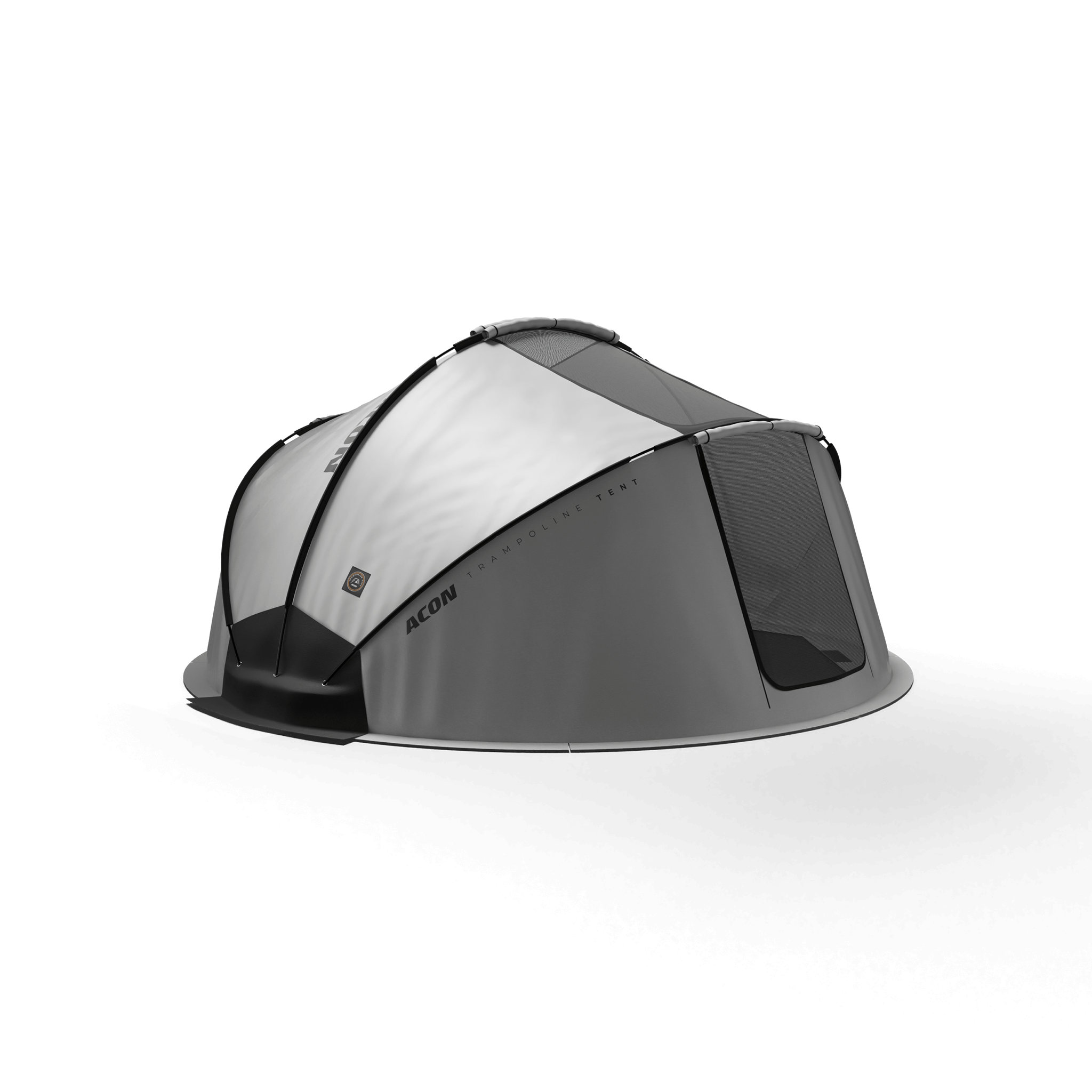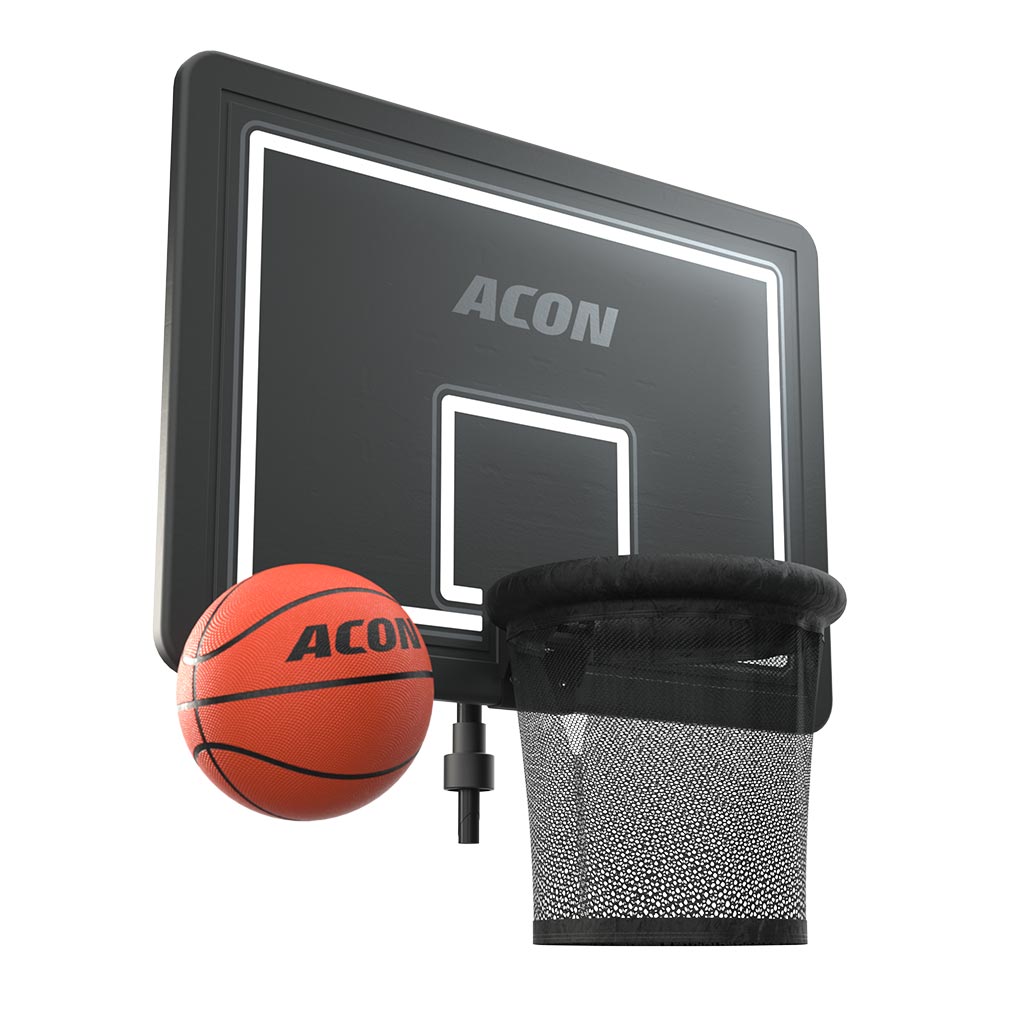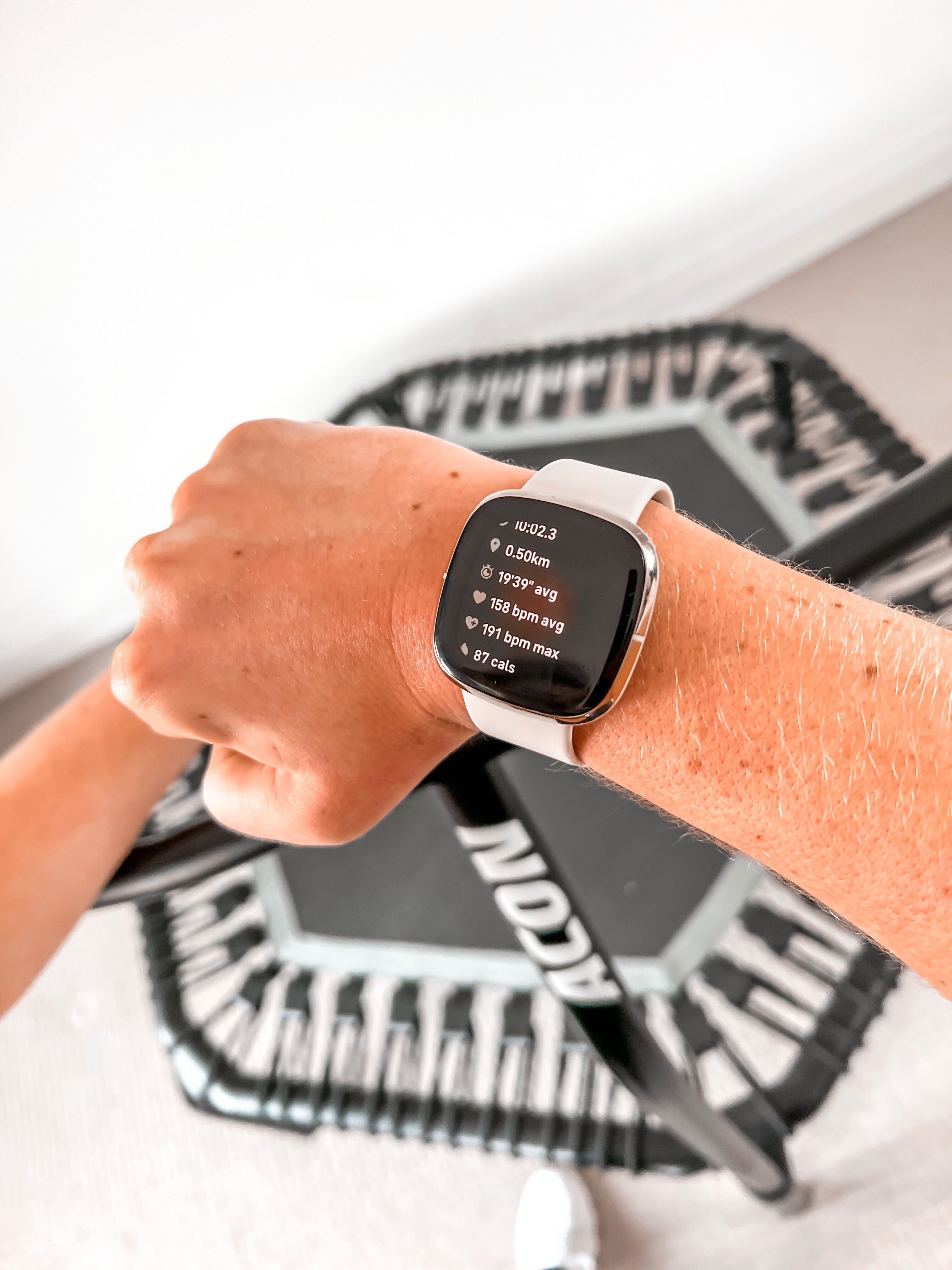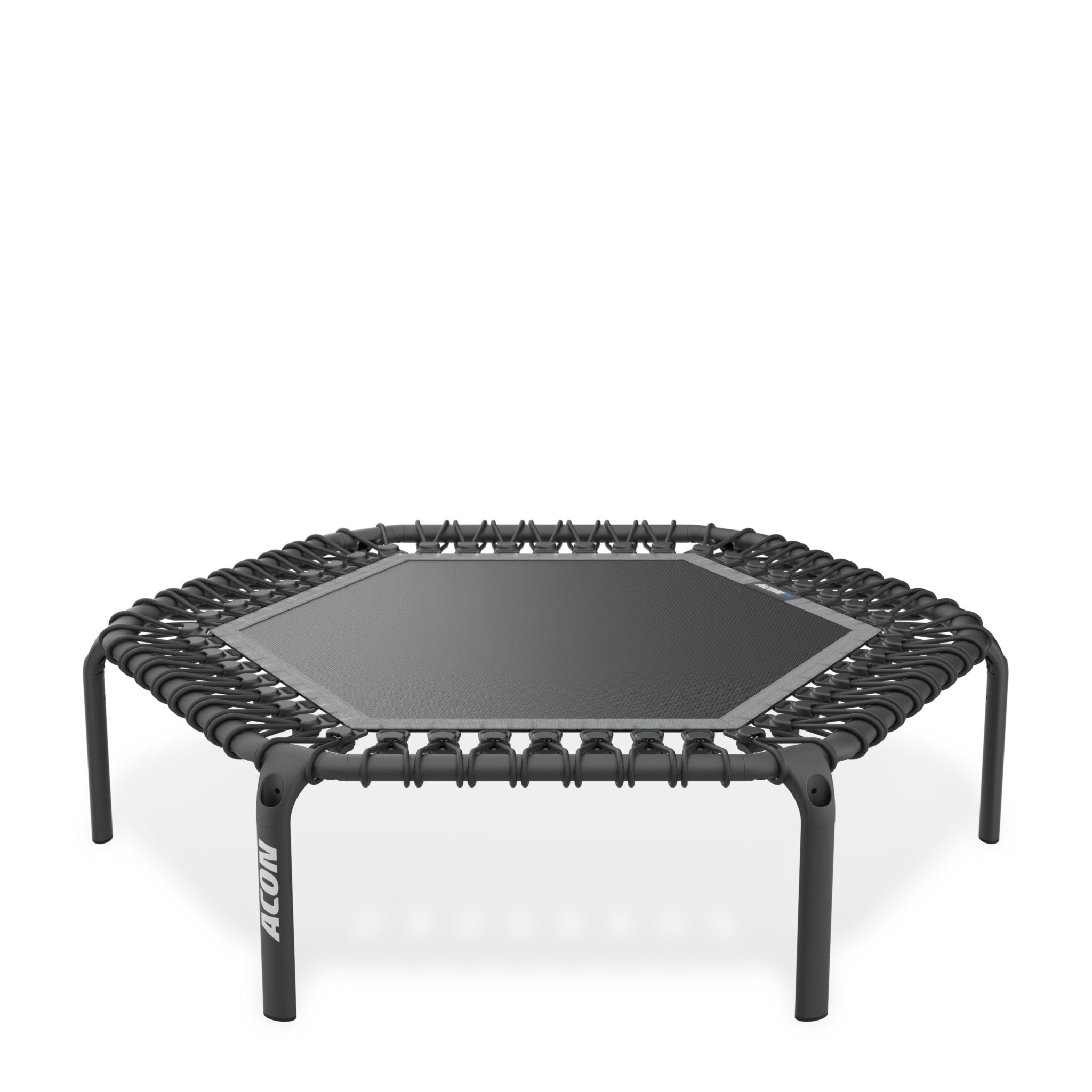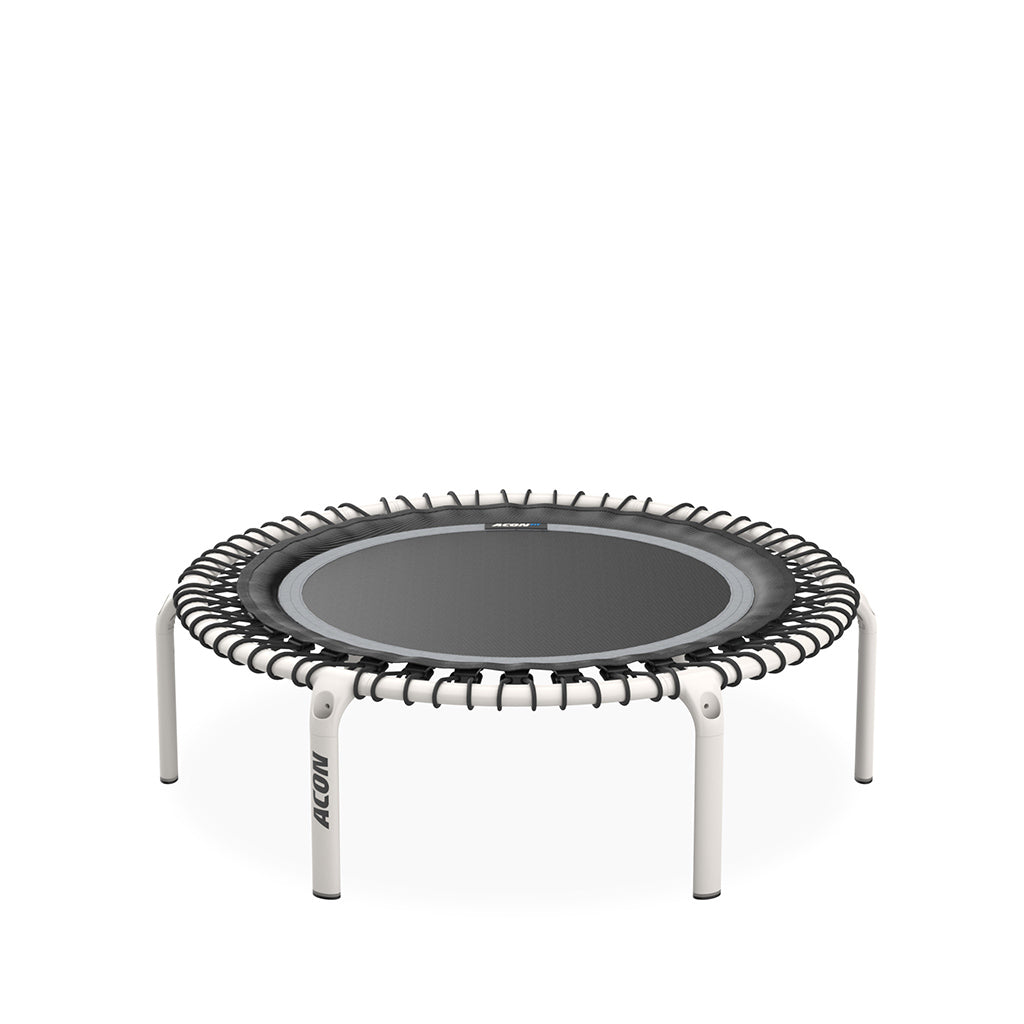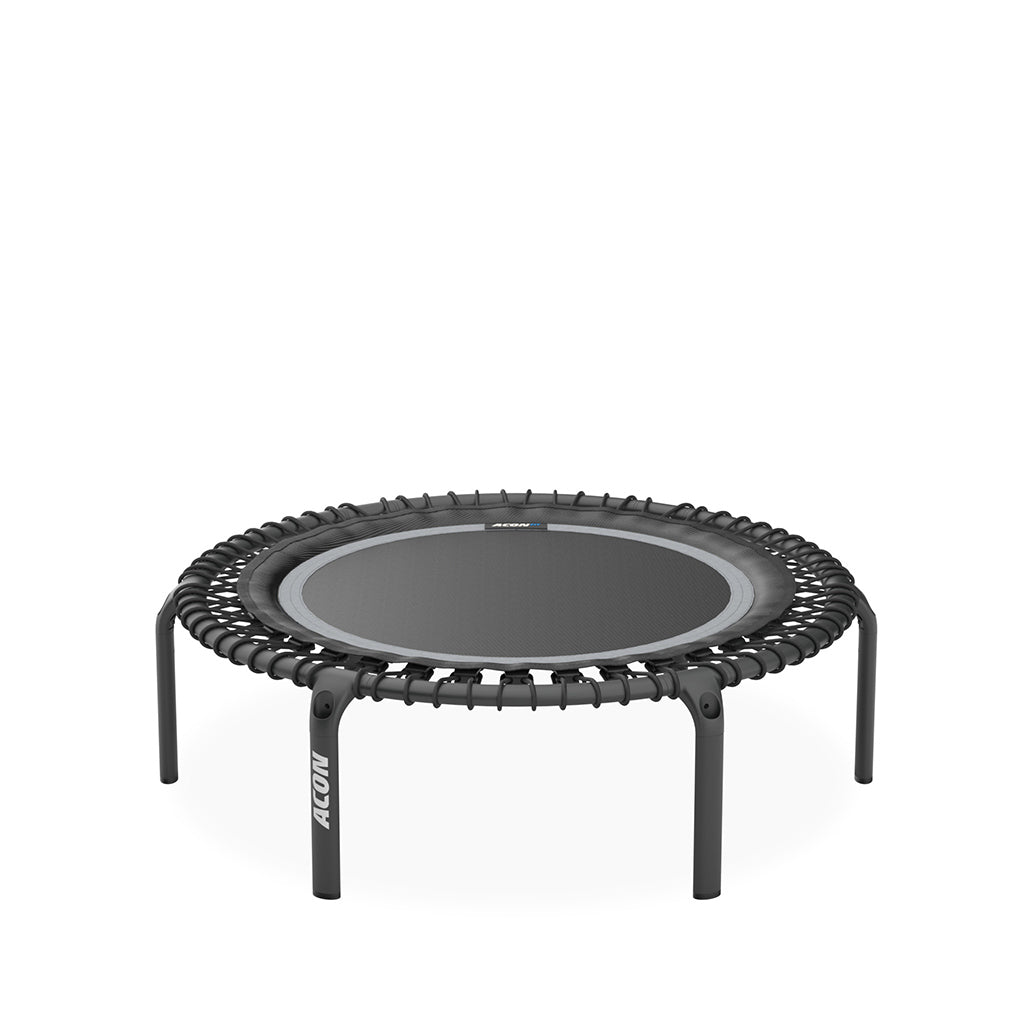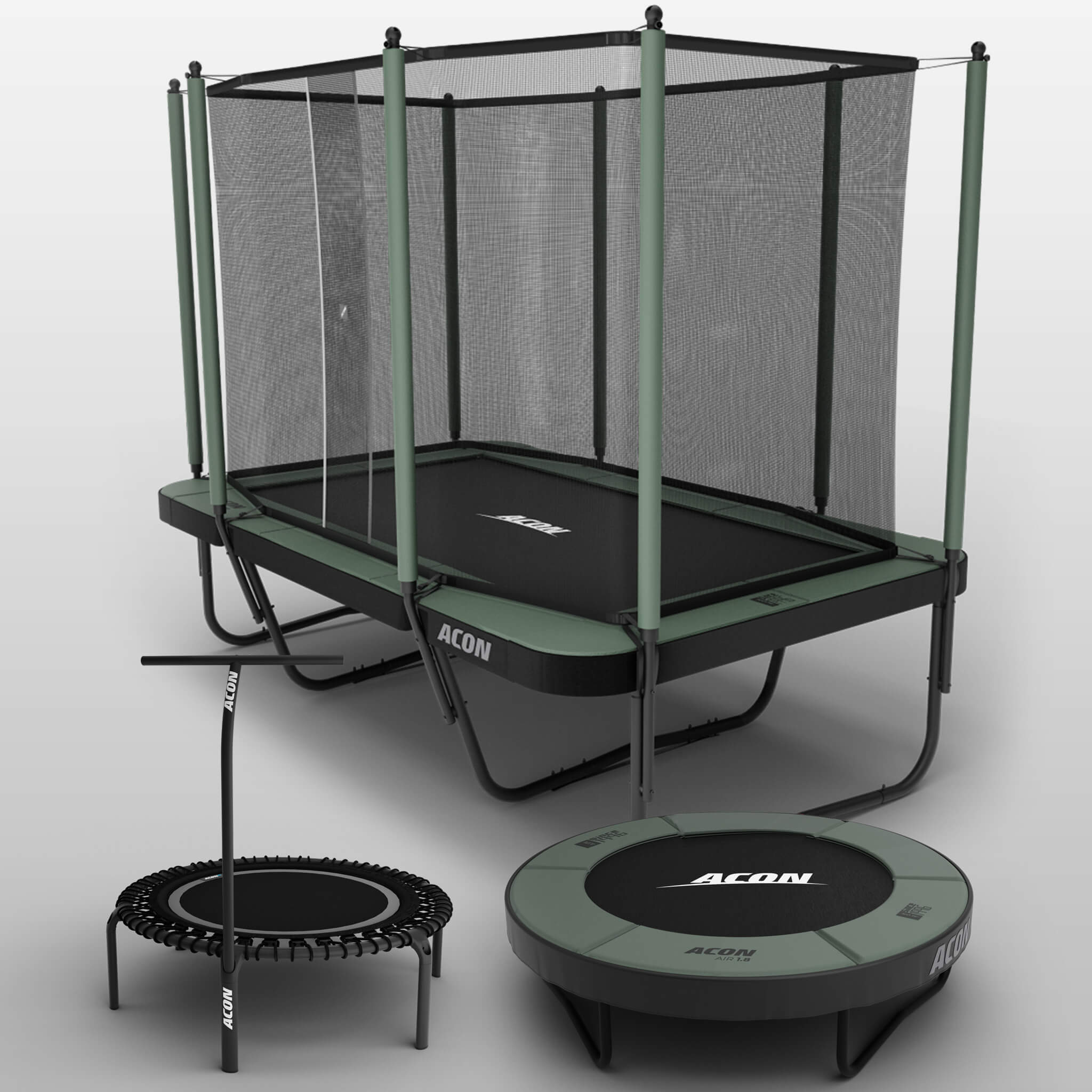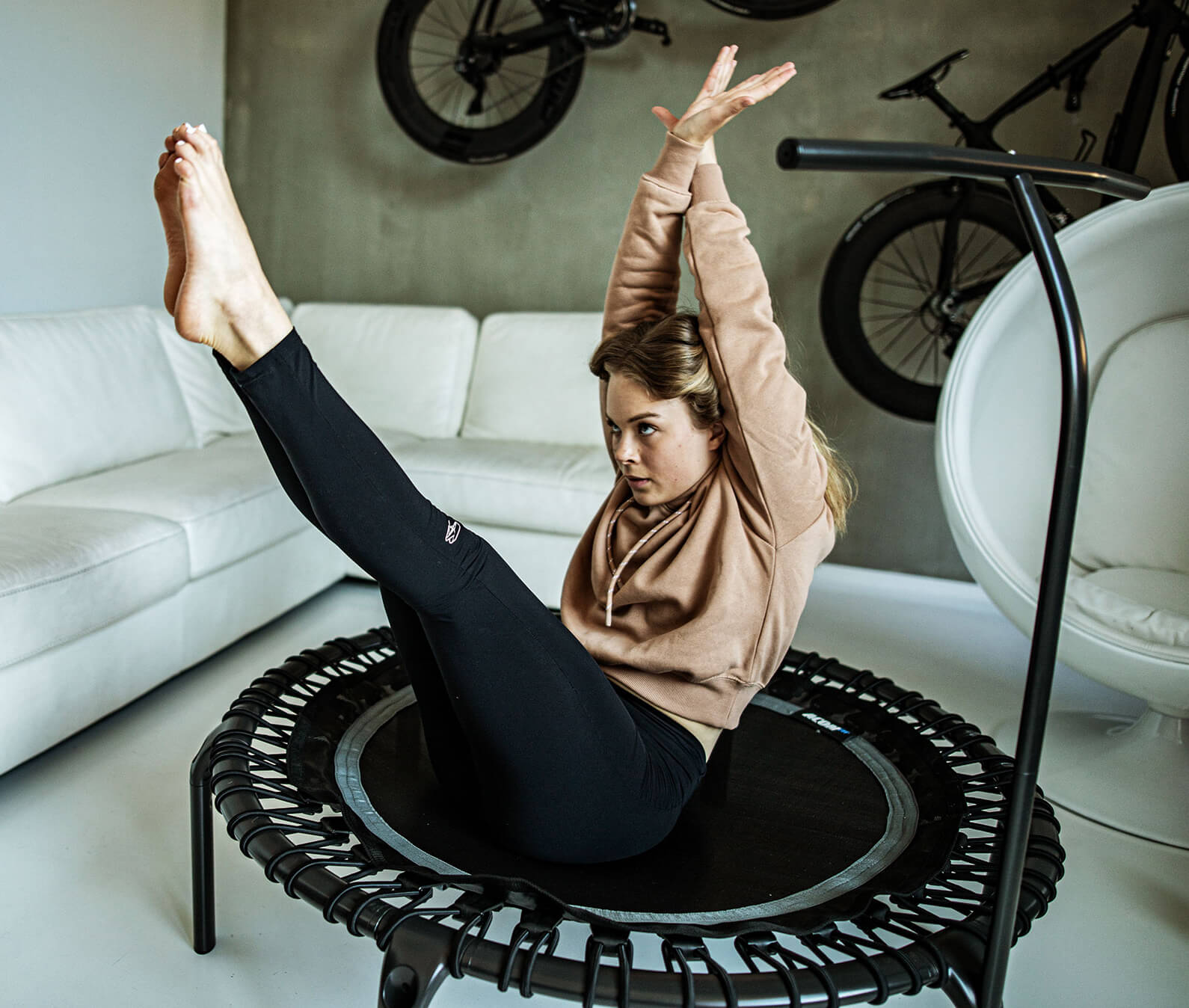Distributacon Inc.
1250 Wayzata Blvd E Unit 1127,
Wayzata, MN 55391, USA
Before jumping into it, we want to remind you that when it comes to choosing a fitness routine, it’s about far more than calories burned. It's about unlocking the joy in movement, harnessing the power of exercise for your mind, and cultivating a compassionate relationship with your body.
Now, let's jump into the science behind rebounding, put it to our own test, and uncover the truth about its calorie-burning potential.
Calories Burned on a Rebounder
Some of those who are looking into starting reboundin wants to burn those significant calories. When it comes to how much you burn, it's utterly dependent on your gender, weight, and the intensity of your workout. Additionally, when it comes to different types of cardiovascular exercises, you may think: are there ones that burn more calories than others?
Many studies show rebounding workouts, (or jumping on a mini trampoline) is a form of cardio that burns more calories than typical cardio workouts like running, swimming, and cycling (see chart below for the average amount of calories burned for each of these workouts).
One PubMed study¹ found that people burn around 12.4 calories per minute on a rebounder, while another study² shows an average of 6.9 calories per minute. The difference in outcome proves our earlier point - burning calories is entirely individual and that’s why it’s important to remember that fitness isn't just about burning calories or achieving a certain body shape.
Instead, it's about improving our health and well-being, both physically and mentally. By prioritizing our fitness routine, we can improve our heart health, build our strength and endurance, reduce stress and anxiety, and elevate our mood. But for study purposes, we wanted to dig deeper to see how many calories rebounding burns on average, so we put it to the test.
| Form of exercise | Calories | Source |
|---|---|---|
| Running | 8.5 calories per minute | WebMD Study³ |
| Cycling | 8.4 calories per minute | Harvard Study⁴ |
| Swimming | 4.8 calories per minute | Harvard Study⁴ |
*Reminder! The size of the person and the intensity of the workout have an impact on the results*
How We Conducted the Calorie-Burning Test on a Rebounder
To determine the average number of calories burned on a rebounder, we conducted a study that involved two subjects performing the same workout while monitoring their heart rate and calories. The study involved two tests: a low-intensity and a high-intensity workout on the ACON rebounder. Both subjects used a sports watch to track their calories and heart rate. It’s important to note that the measurements may vary depending on what device you’re using and what fitness category you choose (ex HIIT Training, running, Just Workout).
Acon Rebounders
Show AllTest subject 1: Sydney
The first subject, Sydney, is a female who is 5'4" tall and weighs 128 pounds. As a rebounding fitness instructor, Sydney rebounds 5-6 times a week. She also has an on demand fitness platform, Jump&Jacked, that specializes in rebounding workouts and making fitness fun.


Test subject 2: Alex
The second subject, Alex, is quite different from Sydney. He is a male bodybuilder who is 5'9" tall, his body composition is high percent muscle mass, weighs 208 pounds, and primarily focuses on lifting weights. Although Alex does little to no cardio, his intense weightlifting sessions raise his heart rate.
Overall, the study involved two very different subjects, and the results provide insight into the average number of calories burned during rebounding.
The Trampoline Workouts We Did
Both the low-intensity and high-intensity workouts were 10 minutes in length. We made sure to perform the same exercises and make the workout FUN. We turned up the music and jumped to the beat of our favorite songs.
Low-intensity workout
We completed each exercise for 30 seconds and repeated them until the 10 minutes were up. These exercises were performed with low intensity:
- Jumping Jacks
- Jog
- In & Out
Feedback from the low-impact workout:
This version felt very doable and enjoyable! It was enough to break out a sweat, but we could still sing along to our favorite workout tunes.
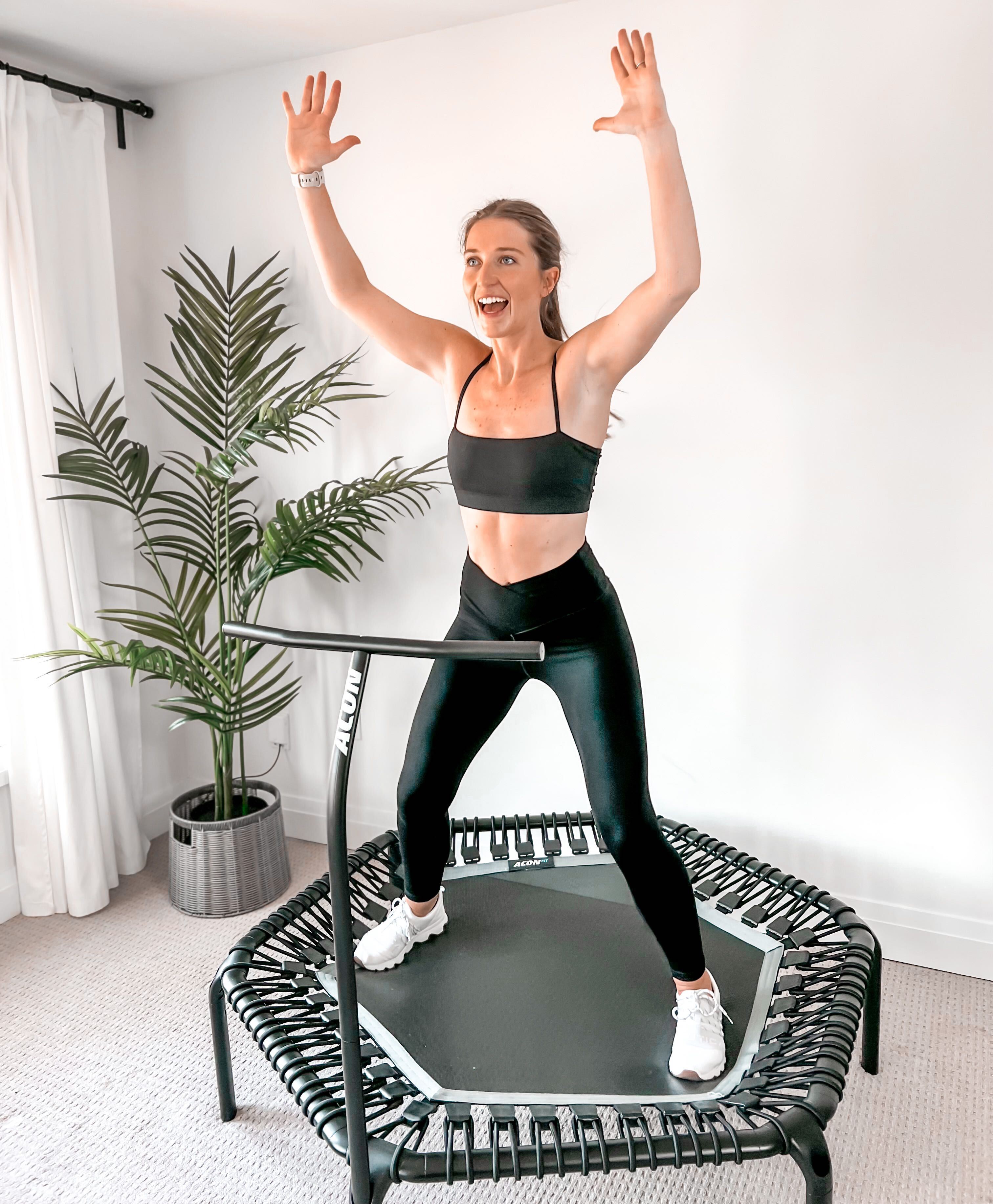
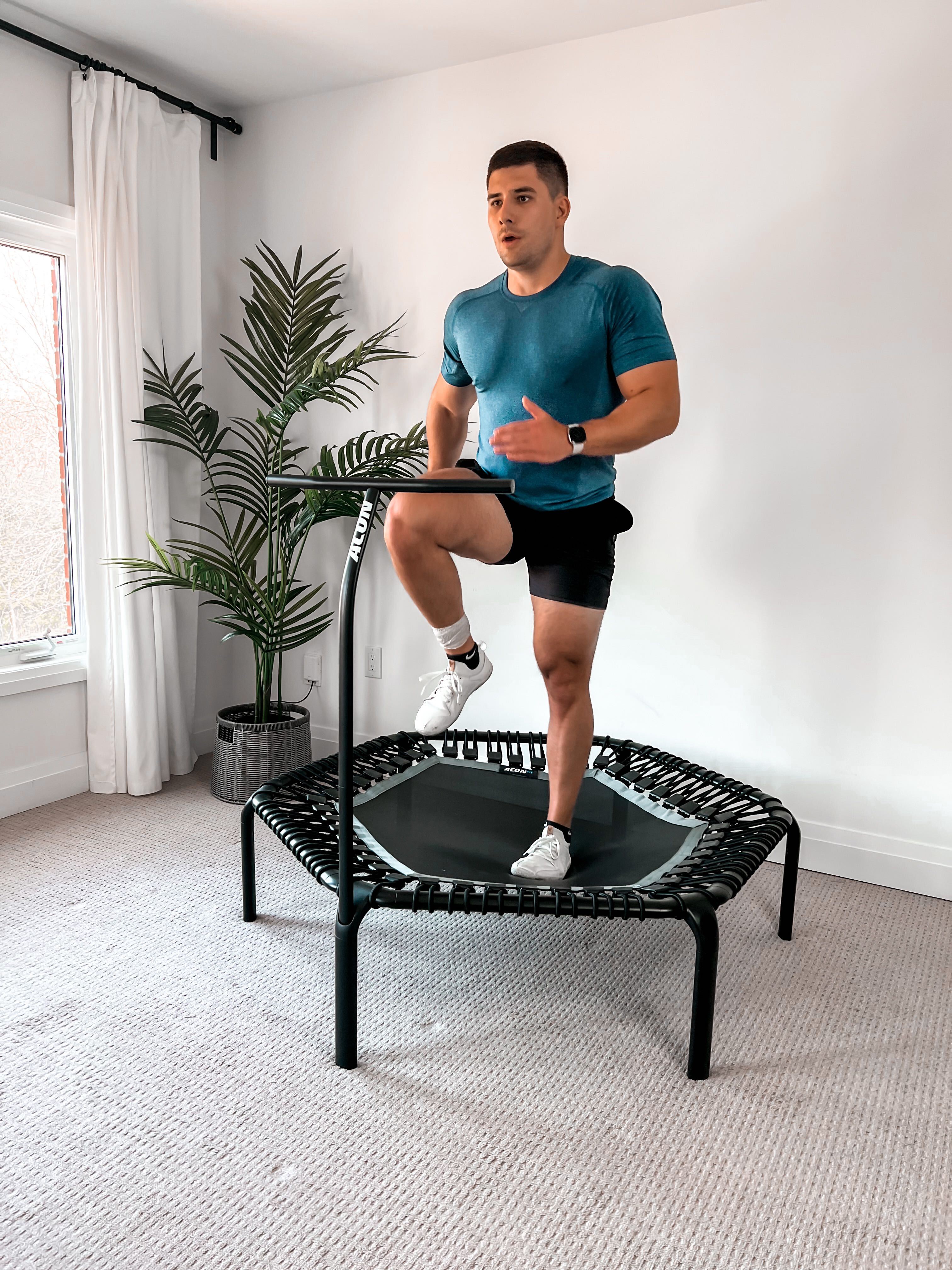
High-intensity workout
For this workout, we did Tabata-style training, known as one of the greatest high-intensity exercises. Tabata involves pushing it as hard as possible for 20 seconds and resting for 10 seconds.
- Sprints
- Pulse (swaying side to side to rest)
Feedback from the high-impact workout:
Alex and Sydney were gasping for air by the third set of sprints. We were dripping sweat and could not talk while performing this workout.
Test Results
During the test, we monitored our heart rate, how many calories were burned on the rebounder and RPE (Rate of Perceived Exertion). The RPE is subjective, but an excellent tool for tracking the intensity of the exercise; you rate the intensity on a scale of 1-10 (10 being the most challenging).
Low-Intensity Workout Results
| Information | Sydney | Alex |
|---|---|---|
| Current Weight | 128lbs / 58kg | 208lbs / 94kg |
| Average Heart Rate | 127 average bpm | 137 average bpm |
| RPE | 5 | 6 |
| Calories Burned | 65 calories | 138 calories |
High-Intensity Workout Results
| Information | Sydney | Alex |
|---|---|---|
| Current Weight | 128lbs / 58kg | 208lbs / 94kg |
| Average Heart Rate | 159 average bpm | 150 average bpm |
| RPE | 8 | 8 |
| Calories Burned | 87 calories | 146 calories |
So does jumping on the trampoline burn calories? After conducting this study, it became evident that the more weight you carry, the more calories burned on a rebounder. This outcome makes sense as a heavier load requires greater effort to complete tasks.
However, it's important to note that your calorie consumption tends to be higher when you have a higher body mass, so it's all relative. Furthermore, the study also revealed that if you want to burn more calories, opting for a higher-intensity workout that maintains an elevated heart rate can assist in achieving your goal.
Calories burned on average - chart
Below, you may find a chart on how many calories on average were burned theoretically in relation to the length of the workout:
| Time | Sydney - low intensity | Sydney - high intensity | Alex - low intensity | Alex - high intensity |
|---|---|---|---|---|
| 10 Minutes | 65 calories | 87 calories | 138 calories | 146 calories |
| 20 Minutes | 130 calories | 174 calories | 276 calories | 292 calories |
| 30 Minutes | 195 calories | 261 calories | 414 calories | 438 calories |
| 40 Minutes | 260 calories | 348 calories | 552 calories | 584 calories |
| 50 Minutes | 325 calories | 435 calories | 690 calories | 730 calories |
| 60 Minutes | 390 calories | 522 calories | 828 calories | 876 calories |
This is a rough estimate of how many calories you would burn if the workout session were longer. We would have to complete the workout with the same amount of intensity we did in the 10 minutes of activity.
Maintaining the intensity of the low-intensity workout would be very doable. On the other hand, the high-intensity workout would be tough to complete without taking any breaks since the 10 minutes alone felt very challenging.
It’s important to start slow and listen to your body when starting a new fitness routine. Find a routine that you can enjoy consistently. If our goal is to burn as many calories as possible in one workout, we miss out on the pure joy and satisfaction that physical activity can bring. Not to mention, this kind of approach can often result in injuries or extreme soreness the next day, leaving us feeling unmotivated to continue.
Is Rebounding Beneficial for Weight Loss?
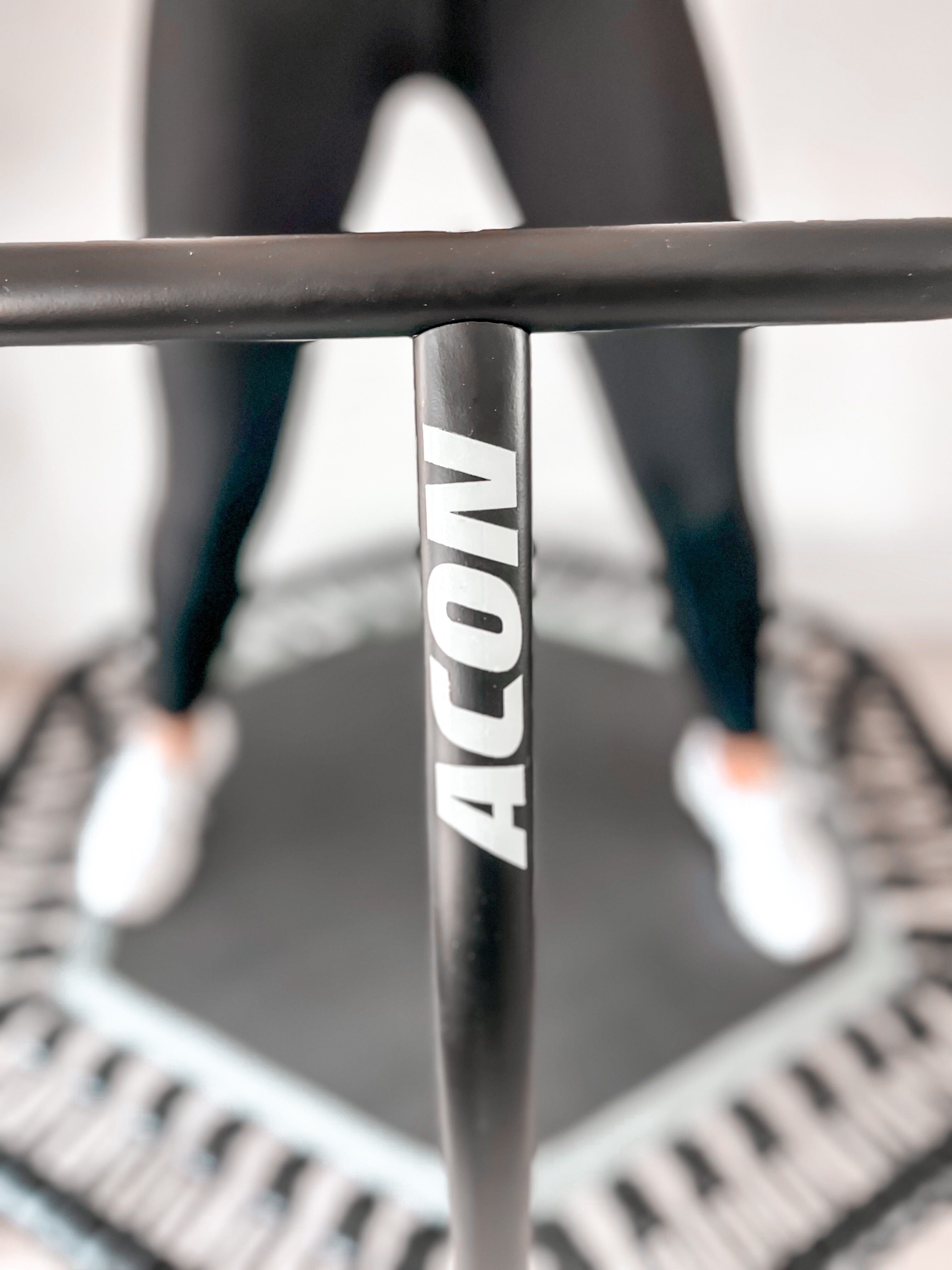
Rebounding isn't just a fantastic way to reap an endless list of benefits such as improving balance and coordination, increasing bone density, and flushing out toxins - it's also an excellent tool for weight loss, but for a reason, you won't expect it.
The hard truth is that weight loss is achieved through burning more calories than you consume, but consistently applying this formula is no easy feat. This is where the magic key comes in: find a way to enjoy the process. And what's more enjoyable than bouncing on a trampoline to the beat of your favorite tunes? It's a subjective experience, of course, but for many, rebounding allows them to tap into a childlike joy that we all too often lose in the stresses of adulthood.
But there's another critical reason why rebounding is an excellent choice for weight loss: its low-impact benefits. Consistently running, for instance, can lead to injuries such as knee pain, plantar fasciitis, and shin splints, ultimately hindering your consistency and success. However, rebounding allows you to perform the same movements with less joint impact, enabling you to achieve longevity and weight loss success.
Instead of focusing on the scale and calories burned it’s crucial to approach fitness holistically, with a focus on how it can enhance our quality of life. So, let's ditch the rigid and stressful workout routines and instead embrace enjoyable physical activities that bring us happiness, inner peace, and a renewed sense of vitality. Remember, fitness isn't just a goal; it's a journey towards a healthier and happier life.
Summary
If you're looking to bring more joy and excitement to your workout routine while burning some major calories, rebounding could be the perfect solution for you! A rebounder is not only a fantastic investment for achieving your fitness goals but also an enjoyable way to move your body and feel good.
Remember, our bodies are incredible and unique, and we should celebrate them by embracing activities that make us feel happy and confident. So, yes rebounding does help you burn calories but don’t just get one for that reason, get one because it will help transform your relationship with exercise and most importantly yourself.
If you're ready to start your journey towards a healthier and happier life, head over to check our rebounders to find the perfect rebounder for you!
Links to referred articles:
PubMed Study¹
ScienceDirect Study²
WebMD Study³
Harvard Study⁴


